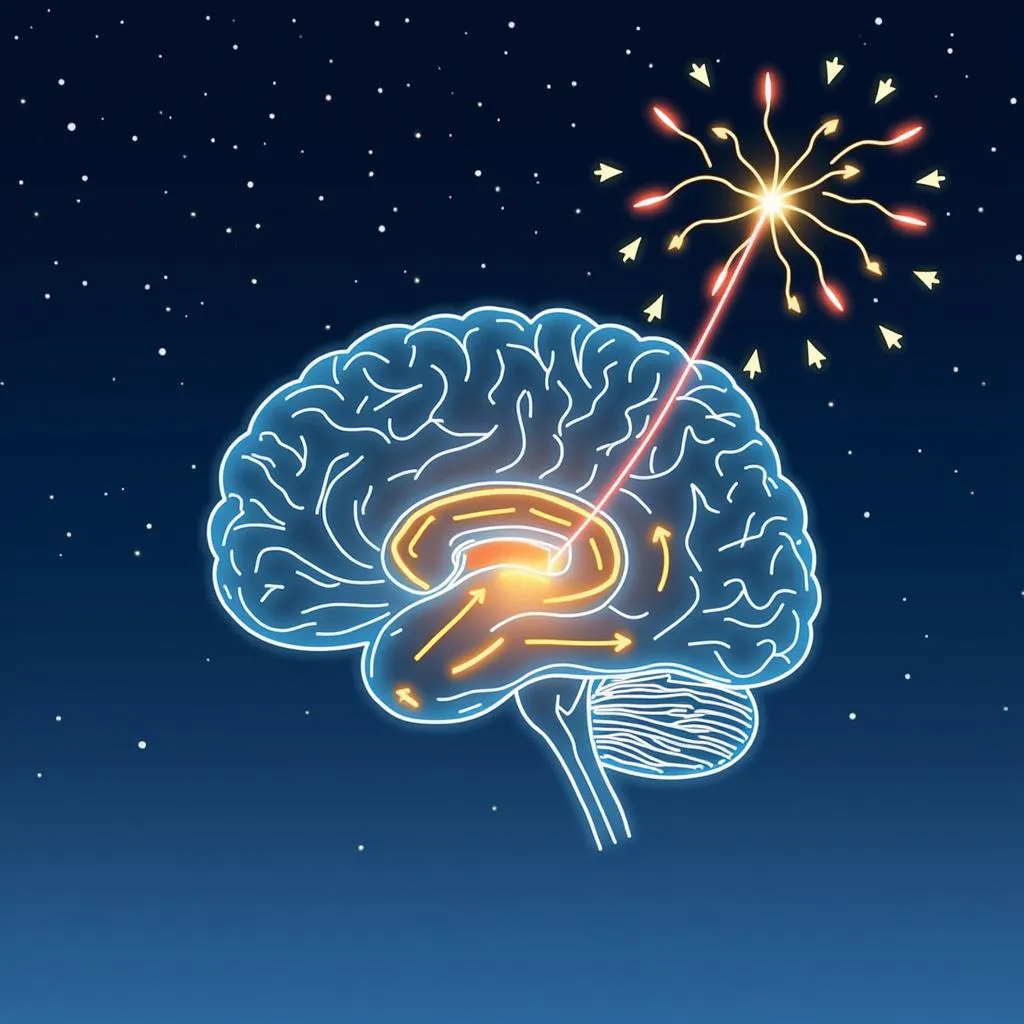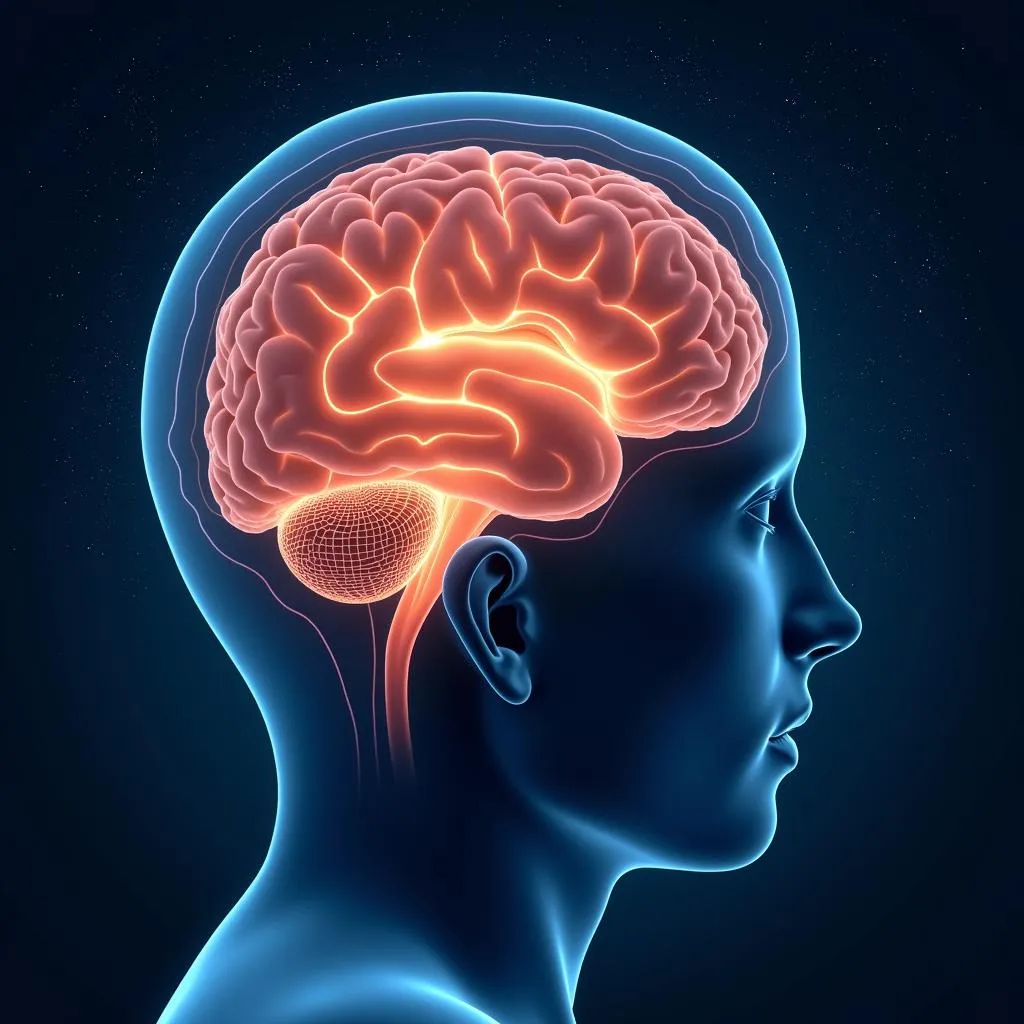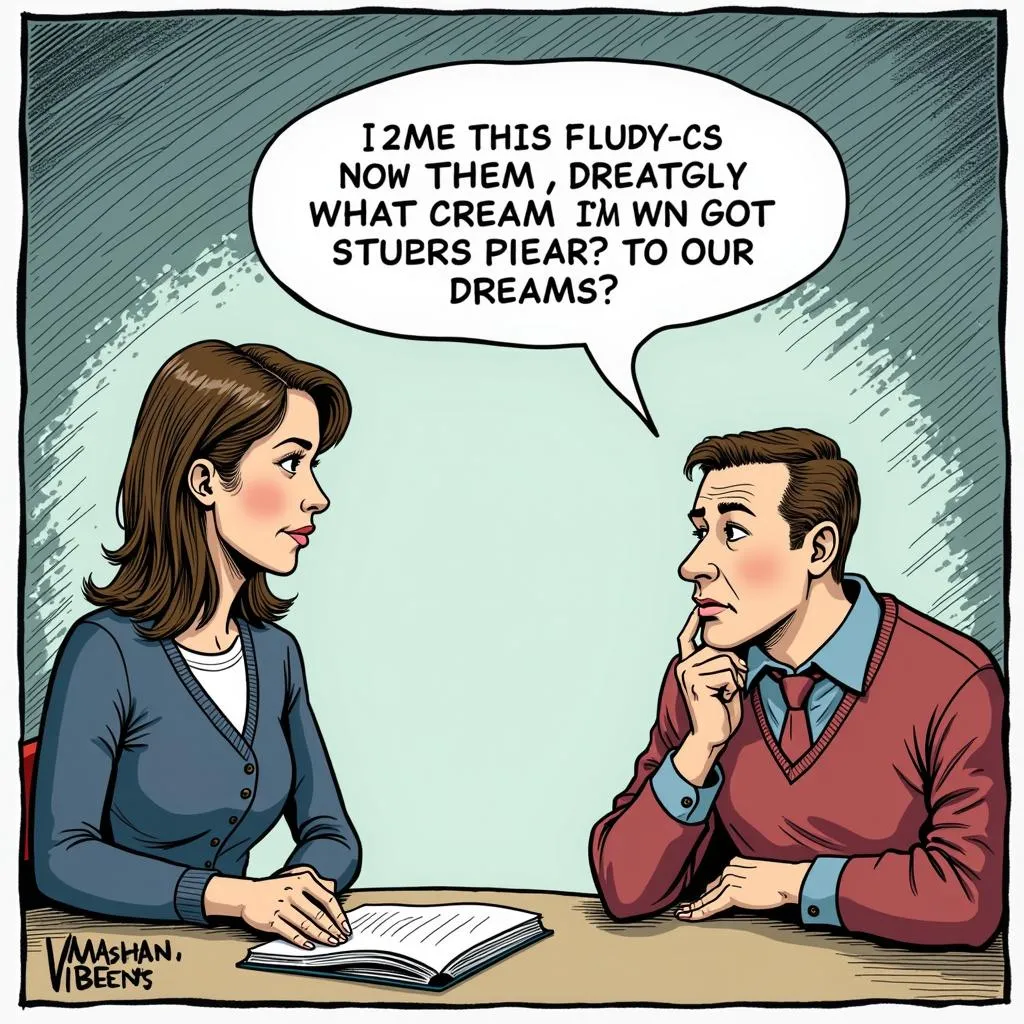Which Researcher Believed That Dreams Simply Reflect our waking lives? This question has intrigued thinkers for centuries, and while numerous theories attempt to unravel the mysteries of the dreaming mind, one name frequently surfaces: Hobson and McCarley. Their groundbreaking Activation-Synthesis Theory, though not without its critics, suggests that dreams are essentially the brain’s way of making sense of random neural activity during sleep. Let’s delve deeper into this intriguing concept and explore the implications for our understanding of dreams.
The Activation-Synthesis Theory: Dreams as Random Neural Firings
In 1977, psychiatrists Allan Hobson and Robert McCarley proposed their revolutionary Activation-Synthesis Theory, challenging the prevailing Freudian interpretations of dreams as hidden desires and repressed emotions. They argued that dreams originate from the spontaneous firing of neurons in the pons, a region of the brainstem active during REM sleep.
 Diagram illustrating the Activation-Synthesis Theory
Diagram illustrating the Activation-Synthesis Theory
According to Hobson and McCarley, the forebrain, responsible for higher-order thinking, receives these random neural impulses and attempts to interpret them, creating a narrative from the chaos. This process, termed “synthesis,” results in the often bizarre and illogical nature of dreams. Essentially, the brain weaves a story from the neural “noise,” much like trying to decipher meaning from static on a television screen.
Evidence Supporting the Activation-Synthesis Theory
Several lines of evidence lend credence to Hobson and McCarley’s theory:
- REM Sleep and Dreaming: The strong correlation between REM sleep and vivid dreaming supports the idea that neurological activity plays a crucial role.
- Brain Activity During Dreams: Neuroimaging studies reveal increased activity in regions associated with emotion, memory, and visual imagery during REM sleep, aligning with the subjective experience of dreaming.
- Illogical Dream Content: The often disjointed and nonsensical nature of dreams aligns with the idea of the brain attempting to make sense of random neural input.
 3D illustration of brain activity during REM sleep
3D illustration of brain activity during REM sleep
Criticisms and Modifications of the Theory
Despite its influence, the Activation-Synthesis Theory has faced its share of criticisms:
- Emotional Significance of Dreams: Critics argue that the theory fails to adequately address the emotional depth and personal significance often attributed to dreams.
- Cognitive Processes in Dreams: Some argue that dreams demonstrate a higher level of cognitive processing than merely reacting to random neural activity, pointing to instances of problem-solving and creative insights gleaned from dreams.
In response to these critiques, Hobson later revised the theory, renaming it the AIM Model, which acknowledges the role of emotions and memory in shaping dream content.
The AIM Model: Expanding on Activation-Synthesis
The AIM Model, standing for Activation, Input-Output Gating, and Modulation, acknowledges the influence of various factors on dreaming:
- Activation: Similar to the original theory, spontaneous neural activity initiates the dreaming process.
- Input-Output Gating: This refers to the brain’s filtering system, which differs between waking and dreaming states. During REM sleep, external sensory input is blocked, and internal input from memory and emotion centers is heightened.
- Modulation: This component recognizes the role of neurotransmitters in shaping the emotional and cognitive content of dreams.
 A therapist and patient discussing a dream
A therapist and patient discussing a dream
Conclusion: Dreams as a Window into the Brain
While the question “Which researcher believed that dreams simply reflect?” leads us to Hobson and McCarley’s influential theories, the nature and purpose of dreams remain a subject of ongoing debate. The Activation-Synthesis Theory, and its later evolution into the AIM Model, provide a compelling neurological framework for understanding these nocturnal narratives. However, the undeniable emotional resonance and personal significance many experience in their dreams suggest that the story of dreaming is far from over. Unraveling the secrets held within our sleeping minds continues to be a fascinating journey of scientific exploration and self-discovery.
FAQs:
1. Do all dreams occur during REM sleep?
While most vivid dreams occur during REM sleep, research suggests that we can dream in other stages of sleep as well, although these dreams tend to be less memorable.
2. Does everyone dream?
It is believed that everyone dreams, even if they don’t recall their dreams upon waking.
3. Can dreams predict the future?
There is no scientific evidence to support the notion that dreams can predict the future. However, dreams can reflect our current concerns, anxieties, and hopes, which may sometimes align with future events.
4. What is the meaning of recurring dreams?
Recurring dreams often point to unresolved emotional issues or recurring stressors in our waking lives.
5. Can you control your dreams?
With practice, it is possible to achieve a state of lucid dreaming, where you become aware that you are dreaming and can exert some control over the dream’s narrative.
Do you have more questions about dreams, the paranormal, or other unexplained phenomena? Explore the fascinating articles on our website or contact our team of experts for personalized insights. We’re here to help you navigate the mysteries of the unknown!
Contact us:
Phone: 0904826292
Email: research@gmail.com
Address: No. 31, Alley 142/7, P. Phú Viên, Bồ Đề, Long Biên, Hà Nội, Việt Nam.